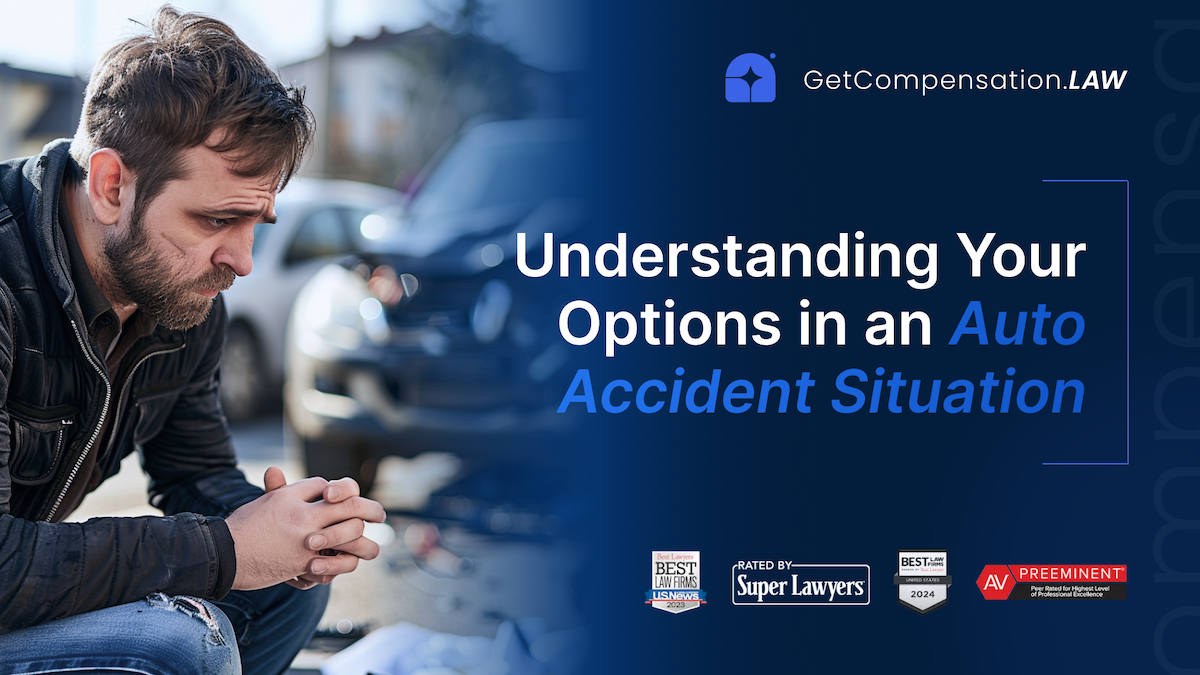
How Property Owner Negligence Increases Compensation in Slip and Fall Cases
Learn how property owner negligence directly increases the value of a slip and fall injury claim. Understand liability, evidence, damages, and how GetCompensation.LAW connects victims with powerful legal representation.
Our Network of Attorneys Are Recognized by the Best
Slip and fall accidents rarely happen by coincidence. In most cases, the conditions that cause a fall develop slowly over time — ignored hazards, neglected maintenance, poor lighting, unsafe walkways, or careless property management. When a landowner or business fails to protect visitors from preventable dangers, the law holds them responsible. At the beginning of this analysis, it’s essential to emphasize the mission of GetCompensation.LAW: to connect victims with determined personal injury trial attorneys who confront insurance companies directly and fight for every dollar the victim deserves.
Negligence is not just a legal concept; it is the core factor that transforms an injury into a compensable claim. The more negligent the property owner’s behavior, the stronger the victim’s position becomes — and the higher the compensation they may be entitled to receive. Understanding how this negligence is identified, documented, and presented can dramatically increase the outcome of a case.
Slip and fall accidents are often triggered by a combination of unsafe conditions and the property owner’s failure to act. These conditions, along with the resulting injuries, form the basis of liability. Examining the surrounding slip-and-fall incident factors is the first step toward proving that the accident was preventable and that the property owner’s actions — or lack of action — directly contributed to the harm.
Recognizing Negligence in Slip and Fall Environments
Negligence arises when a property owner fails to exercise reasonable care in maintaining a safe environment. While some hazards appear suddenly and unpredictably, most dangerous conditions develop because the owner ignored warning signs, skipped routine inspections, or failed to correct known issues.
A few of the most common negligence indicators include:
- A spill left on the floor long enough that employees should have seen it
- Lighting so poor that visitors cannot see changes in flooring or obstacles
- Torn carpeting or uneven flooring that was previously reported but not repaired
- Ice or snow left untreated in walkways during winter
- Staircases with loose handrails or damaged steps
- Overflowing trash, debris, or unexpected obstacles in high-traffic areas
These conditions reflect a lack of reasonable care. When negligence is evident, the law leans heavily in favor of the injured victim and allows for higher compensation.
The connection between the hazard and the injury becomes even clearer when the surrounding circumstances reveal a pattern of disregard for safety. These slip-and-fall incident factors often provide attorneys with strong evidence to demonstrate liability and counter any attempts by insurance companies to shift blame onto the victim.
How a Property Owner’s Knowledge Affects Compensation
One of the most important elements in slip and fall cases is proving what the property owner knew — or should have known — about the dangerous condition. Compensation increases significantly when evidence shows that:
- The hazard existed for an extended period
- Staff members walked past it without taking action
- Tenants or customers previously complained
- Maintenance logs show a lack of inspections
- Repairs were delayed unnecessarily
- The condition was recurring or predictable
This is known as “constructive knowledge,” meaning the owner should have discovered the hazard through regular inspections or reasonable oversight. When constructive knowledge is proven, insurance companies lose one of their most common defenses: claiming the hazard was sudden and unforeseeable.
Demonstrating constructive knowledge strengthens the argument for negligence, especially when the victim’s attorney builds the case using established premises liability standards.
The Effect of Maintenance Failures on Case Value
A property owner who fails to maintain their premises demonstrates disregard for the safety of others. These maintenance failures often come in the form of:
- Inconsistent cleaning policies
- Lack of training for staff
- Failure to address known structural defects
- Absence of an inspection schedule
- Improper storage of merchandise or equipment
- Neglected repairs, even after prior incidents
When victims fall because a property owner cut corners, saved money by avoiding repairs, or ignored reports of unsafe conditions, the compensation amount typically increases dramatically.
Insurance companies know that maintenance failures make a claim more difficult to defend. As a result, they often attempt early lowball settlements in hopes of avoiding litigation. Strong legal representation ensures victims do not accept these tactics and instead pursue the full value of their claim.

Patterns of Negligence That Strengthen a Case
Negligence rarely occurs in isolation. It often appears in patterns, and these patterns are powerful indicators that the hazard was not accidental or unavoidable. Examples include:
- Multiple incidents occurring in the same area
- Workers admitting the condition had existed for days or weeks
- Lack of signage warning of known risks
- Failure to follow safety codes or industry standards
- Absence of written maintenance procedures
- Evidence that staff ignored clear hazards
These patterns can significantly increase compensation because they show a systemic failure — not a momentary lapse. By identifying and documenting these repeat problems, attorneys build a compelling case demonstrating that the property owner’s negligence directly contributed to the victim’s injuries.
Patterns of negligence also help illustrate the defendant’s avoidable misconduct. When the hazard could have been corrected easily — for example, placing a warning sign, replacing a broken tile, or improving lighting — the victim’s case becomes even stronger.
The Role of Injury Severity in Determining Compensation
Beyond the hazard itself, the injuries sustained play a substantial role in determining compensation. Slip and fall accidents can result in fractures, spinal damage, soft tissue injuries, head trauma, or long-term disability. These injuries impact a victim’s ability to work, move, and live normally.
More severe injuries lead to higher compensation, but the link between negligence and injury severity cannot be understated. When an unsafe condition exists for an extended period and the property owner fails to act, juries and insurance companies view the injuries as a direct consequence of irresponsible behavior.
This is why attorneys place significant emphasis on the physical, emotional, and financial consequences of the incident. They examine the full scope of damages, relying on injury impact considerations to demonstrate the long-term burden placed on the victim.
Why Negligence Can Multiply Financial Recovery
Negligence is not only the foundation of liability; it is also a multiplier of claim value. Compensation increases when negligence is clear because:
- Insurers know juries punish irresponsible property owners
- The victim’s suffering appears directly tied to careless behavior
- Maintenance failures reflect poorly on large corporations
- Repeat issues create a perception of disregard for public safety
- The property owner may face punitive consequences
Victims are entitled to recover compensation for medical expenses, lost income, pain, suffering, disability, future care needs, and more. Cases involving extreme negligence often lead to higher awards because the law recognizes the harm caused by reckless disregard for safety.
When attorneys identify multiple layers of negligence — such as poor maintenance combined with a lack of inspections and ignored complaints — the potential recovery grows significantly.
How Attorneys Build Strong Negligence Cases
Slip and fall cases involving negligence require detailed investigation. Attorneys gather evidence such as:
- Surveillance footage
- Witness accounts
- Maintenance logs
- Internal emails or reports
- Weather data (for outdoor incidents)
- Photographs of the hazard
- Medical documentation
They also analyze inconsistent statements made by property owners, contradictions in policy, and gaps in inspection routines. Each piece of evidence adds weight to the claim and makes it harder for insurers to deny responsibility.
This is where legal strategies for fall victims become essential. With experienced representation, the narrative shifts from blaming the victim to exposing the truth about the property owner’s failures.
Insurance Companies Resist Negligence Claims Aggressively
When negligence is clear, insurance companies become defensive. They may argue:
- The victim was careless
- The hazard was obvious
- Proper signage was present
- The injury predated the fall
- The victim exaggerated symptoms
- Footwear caused the accident
These tactics are designed to shift blame away from the owner. Without strong legal representation, victims often feel pressured into accepting unfair settlements.
GetCompensation.LAW ensures victims are matched with attorneys who push back against these tactics, demand accountability, and insist on fair compensation based on the true extent of the negligence involved.
Conclusion: Holding Negligent Property Owners Fully Accountable
When a slip and fall accident results from preventable negligence, victims deserve justice — not excuses. Property owners must be held accountable when they allow dangerous conditions to persist and cause harm. Through strong evidence, clear documentation, and strategic legal representation, victims can secure the financial recovery they need and deserve.
Insurance companies will try to minimize the impact of the negligence, but GetCompensation.LAW ensures that victims are supported by skilled trial attorneys who fight relentlessly to expose unsafe practices and pursue maximum compensation.




